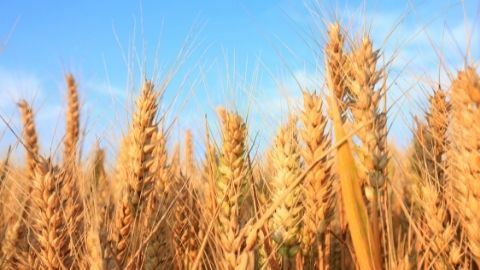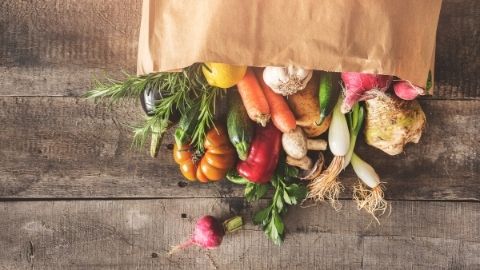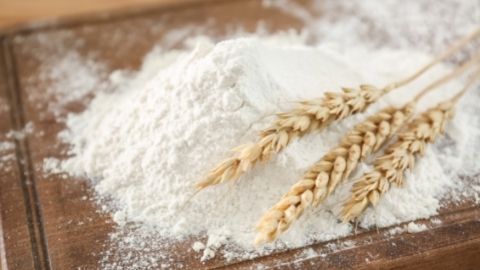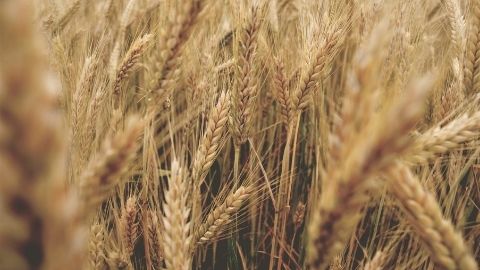Bakery Organic Wheat Flour Quality and Quantity Requirements
Introduction
Consumer demand for organic baked goods is strong, increasing steadily over the last two decades. In fact, the organic breads and grains category was the fifth largest category of organic products sold in 2014, accounting for 9% of total U.S organic food sales (U.S. Department of Agriculture [USDA] Economic Research Service [ERS], 2017). Strong demand for organic breads and grains is reflected in the price premiums in the organic wheat market. In 2019, organic food-grade wheat averaged $12.20/bushel, significantly higher than conventionally grown wheat which sold at $5.35/bushel (USDA Agricultural Marketing Service, 2019).
Unfortunately, the organic wheat market is constrained by a lack of supply, as organic wheat acreage increased by only 20% between 2008 and 2016 (Koory, 2018; McNeil, 2019) and represented less than 2% of all U.S. wheat acreage in 2019 (USDA National Agricultural Statistics Service [NASS], 2020a; USDA NASS, 2020b). In terms of acreage, the Intermountain West states of Montana, Wyoming, Utah, and Colorado have consistently been among the top five organic wheat-producing states since 2010, accounting jointly for 54% of all U.S. organic wheat acreage in 2019 (USDA NASS, 2020a). However, price variability and issues with soil quality and drought have limited the number of growers adopting organic wheat production in the region and created incentives for organic growers to exit the market.
This fact sheet summarizes the findings of a survey conducted with bakery owners and managers to assess their organic wheat flour quality and sourcing needs. We examine the importance of various quality measures in bakery decisions to purchase organic flour and baker perceptions of organic and conventional flour quality. We also discuss the hurdles and issues that bakeries face when purchasing organic flour and what prevents them from using organic flour if not currently doing so. Given the significant contribution of the Intermountain West’s production to domestic organic wheat supply, growers and millers must understand the needs of organic wheat users to ensure profitability and access to market price premiums.
Bakery Survey Overview
The bakery survey data were collected between December 2020 and February 2021 using an online platform. A total of 45 bakeries responded to the survey. The majority are located in western U.S. states (93%), most frequently in California (20%), Colorado (18%), Oregon (16%), Utah (9%), and Washington (9%). Of the 45 bakeries, 37 currently use organic wheat flour or have used it in the past, 2 and eight bakeries have never used organic wheat flour. Most bakeries using organic wheat flour are artisan bakeries selling directly to consumers (57%), primarily through their own store (54%). They vary in size regarding the number of employees, years in business, and monthly gross sales. Bakeries that have not used organic wheat flour are primarily privately owned wholesale bakeries (50%), selling to restaurants and cafes (50%). They also tend to have a large number of employees (50% over 20 employees), have been in business longer (63% over 20 years), and have larger monthly gross sales (63% report $70,000 or more). Regardless of organic wheat flour use, the majority of the bakeries sell bread. Other products sold by more than 60% of the bakeries include cookies, croissants, and pastries.
Table 1 provides details related to baker current and past use of organic wheat flour. Overall, the bakeries indicated that they regularly use or used organic whole wheat bread flour (86%), followed by organic white bread flour (70%) and organic all-purpose flour (49%). Organic white bread flour is used most often by bakeries (49%), followed by organic whole wheat bread flour (22%). The bakeries source organic wheat flour from millers (67%) and distributors, wholesalers, and brokers (64%) and utilize between 1 to 2 suppliers (73%). Among the bakeries using organic wheat, 54% have done so for five years or less.
Table 1
Specifics Related to Organic Flour Use (N = 37)
| Characteristic | Category | N | Percentage |
|---|---|---|---|
| Organic wheat flour used regularly/monthlya | Organic white, bread | 26 | 70% |
| Organic white, cake/pastry | 9 | 24% | |
| Organic whole wheat, bread | 32 | 86% | |
| Organic whole wheat, cake/pastry | 8 | 22% | |
| Organic all purpose | 18 | 49% | |
| Organic wheat flour used most | Organic white, bread | 18 | 49% |
| Organic white, cake/pastry | 1 | 3% | |
| Organic whole wheat, bread | 8 | 22% | |
| Organic whole wheat, cake/pastry | 0 | 0% | |
| Organic all purpose | 3 | 8% | |
| Other | 3 | 8% | |
| All/many | 4 | 11% | |
| Organic wheat flour sourcea | Own milling facility | 4 | 11% |
| Millers | 24 | 67% | |
| Distributors, wholesales, brokers | 23 | 64% | |
| Number of regular organic wheat flour suppliers | None (own mill) | 3 | 8% |
| 1–2 suppliers | 27 | 73% | |
| 3–4 suppliers | 6 | 16% | |
| 5–8 suppliers | 1 | 3% | |
| More than 8 suppliers | 0 | 0% | |
| Years using organic wheat flour | 1–2 years | 6 | 16% |
| 3–5 years | 14 | 38% | |
| 6–10 years | 6 | 16% | |
| 11–20 years | 7 | 19% | |
| More than 20 years | 4 | 11% |
aRespondents could select multiple options, so percentages do not add up to 100%.
Importance of Organic Wheat Flour Quality
The bakeries using organic wheat flour were asked to rank the importance of various factors when making organic flour purchase decisions on a scale of 1 = “not at all important” to 5 = “extremely important.” We calculated the average ranking for each factor and ordered them from most important (highest average ranking) to least important (lowest average ranking). Results in Table 2 show that attributes of the final baked product is the most important factor, followed by baking properties and flour freshness. Quality aspects of flour and consistent quality between shipments are among the top five most important factors, while the price is the least important factor overall.
Table 2
Importance of Factors When Purchasing Organic Wheat
| Factor | Mean |
|---|---|
| Attributes of the final baked product | 4.65 |
| Baking properties | 4.41 |
| Flour freshness | 4.38 |
| Quality aspects of flour | 4.19 |
| Consistent quality/performance between shipments | 4.19 |
| Flour origin | 4.08 |
| Interaction/relationship with the supplier or miller | 3.95 |
| Wheat origin | 3.95 |
| Quality aspects of resulting dough | 3.94 |
| Consumer demand for organic/healthier bakery products | 3.92 |
| On-time delivery | 3.70 |
| Services provided by supplier | 3.70 |
| Price | 3.27 |
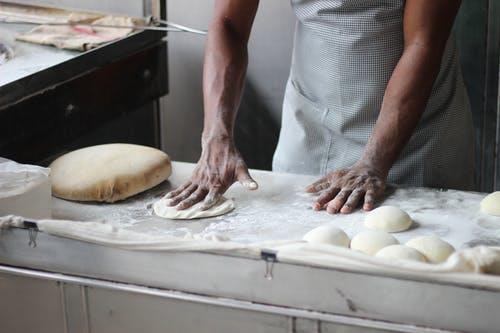 Perceptions of Organic Wheat Flour Quality
Perceptions of Organic Wheat Flour Quality
The bakeries were also asked to rate the overall quality of organic and conventional wheat flour on a scale from 1 = “very low quality” to 5 = “very high quality.” The average ranking of organic flour quality (4.25) was higher than conventional flour quality (3.69), and the difference is statistically significant. Eighty-six percent of the bakeries consider organic flour high or very high quality, while only 59% feel conventional flour is high quality.
We also asked the bakeries which characteristics they view as important indicators of organic wheat flour quality, and for these characteristics, whether they perceive organic flour to be inferior to conventional flour. Table 3 shows that protein quality and content, nutritional content, water absorption, flour texture, and ash content are important to more than half of the bakeries. However, at most, 11% perceive organic flour to be inferior in these characteristics. The remaining characteristics were considered important by less than half of the bakeries, and again, only a few considered organic flour to be inferior.
Table 3
Important Indicators of Organic Wheat Flour Quality
| Quality characteristic | Importanta | Organic inferiorb |
|---|---|---|
| Protein quality | 27 (73%) | 3 (11%) |
| Protein content | 25 (68%) | 2 (8%) |
| Nutritional content | 23 (62%) | 1 (4%) |
| Water absorption | 22 (59%) | 2 (9%) |
| Flour texture | 21 (57%) | 2 (10%) |
| Ash content | 19 (51%) | 0 (0%) |
| Dough strength/alveograph values (P, L, W) | 18 (49%) | 2 (11%) |
| Dough stability time | 17 (46%) | 2 (12%) |
| Wet gluten test/gluten content and quality | 17 (46%) | 1 (6%) |
| Dough development time/peak time | 16 (43%) | 3 (19%) |
| Mixing tolerance index | 15 (41%) | 1 (7%) |
| Flour color | 15 (41%) | 0 (0%) |
| Dough extensibility and resistance/extensigraph values (E, R) | 14 (38%) | 2 (14%) |
| Enzyme activity/flour falling number | 14 (38%) | 1 (7%) |
| Viscosity/flour starch properties | 9 (24%) | 1 (11%) |
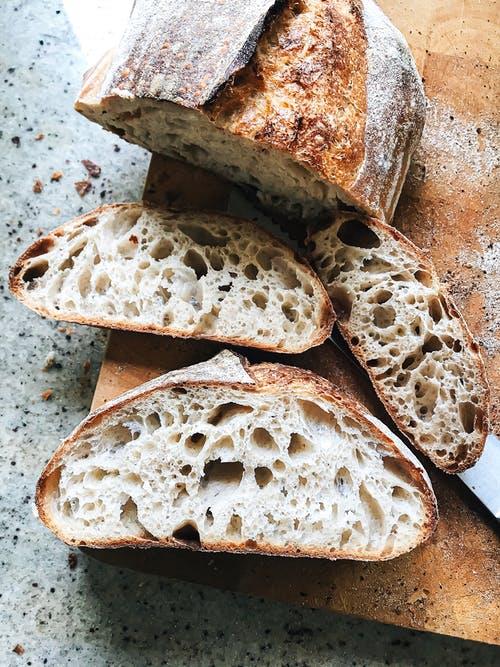
a Percentages represent the share of those who viewed the characteristic as important among those who use organic flour currently or in the past.
b Percentages represent the share of those who indicated that organic flour is inferior to conventional among those who viewed the characteristic as important.
Hurdles Impacting Organic Wheat Flour Use
We also examined the hurdles bakeries face when securing their desired organic wheat flour quality or quantity and issues preventing those who have not used organic flour from using it. We asked those with experience using organic flour (currently or in the past) whether they perceive certain issues to be hurdles on a scale from 1 = “not a hurdle” to 3 = “definitely a hurdle.” Averages reported in Table 4 show that the price of organic wheat berries or flour is perceived as the biggest hurdle, with 61% viewing cost as an obstacle. Difficulty finding organic flour suppliers and not enough interaction with suppliers are considered hurdles by at least one-third of bakeries.
Table 4
Hurdles to Securing Desired Quality or Quantity of Organic Wheat Flour
| Hurdle | Mean | Not a hurdle | Somewhat of a hurdle | Definitely a hurdle |
|---|---|---|---|---|
| Cost/price of organic wheat berries/flour | 1.81 | 39% | 42% | 19% |
| Difficulty finding organic wheat berries/flour suppliers | 1.49 | 60% | 31% | 9% |
| Not enough interaction with wheat berries/flour suppliers | 1.48 | 67% | 18% | 15% |
| Complexity of handling and transporting organic wheat berries/flour | 1.36 | 73% | 18% | 9% |
| Suppliers do not understand our quality requirements | 1.31 | 75% | 19% | 6% |
| Suppliers are unable to verify some of the quality requirements | 1.30 | 73% | 24% | 3% |
| Contamination of organic wheat berries/flour during handling and transportation | 1.09 | 91% | 9% | 0% |
Only a minority of the bakeries had issues sourcing organic flour or finding quality organic flour. Twenty percent agree that they need more organic wheat berries/flour than their suppliers can provide, and 23% indicate needing higher quality than their suppliers currently provide. However, since bakeries see organic wheat pricing as a primary hurdle, they may purchase additional organic wheat if the price was lower. Of the bakeries who had stopped using organic wheat flour (N = 6), two selected cost as the reason. Two others selected lack of consumer interest in organic bakery products (one hinted that the higher price is the issue). However, 76% of those who have experience using organic wheat flour agree that consumer demand for healthier/organic bakery products is strong.
Price is also the major reason bakeries who have not used organic flour do not plan to do so in the future (75%). Other selected issues include concerns related to supply, consumer demand, difficulty complying with USDA organic standards, and concerns related to final bakery products (25% for each).
Conclusions
While the bakery survey results show that quality and consistency are not the most important factors when bakeries purchase organic wheat flour, they are among the top five. Overall, organic wheat flour is perceived to be of higher quality than conventional flour. Protein quality and content are viewed as important quality characteristics. Bakeries indicated that the final baked product and flour baking performance were more important than organic flour quality.
While price is viewed by bakeries as the least important factor when purchasing organic wheat flour, it was viewed as a major hurdle to securing organic flour among those who have previously purchased it. Price is also the most frequently selected issue among those who have never used organic wheat flour. Hence, lower pricing may likely increase bakery use of organic wheat flour. Interestingly, bakeries stated that consumer interest in organic bakery products was strong, but it seems their customers are not willing to pay the prices needed for some bakeries to justify using organic flour. Understanding customer needs and the factors that impact their demand for organic bakery products will be essential to product choice and pricing, as well as the decision to provide organic options.
References
- Agricultural Marketing Service. (2019, April 24). National organic grain and feedstuffs report. U.S. Department of Agriculture. https://www.ams.usda.gov/mnreports/lsbnof.pdf
- Economic Research Service. (2017). Organic market overview. U.S. Department of Agriculture. https://www.ers.usda.gov/topics/natural-resources-environment/organic-agriculture/organic-market-overview/
- Koory, R. (2018, July 7). Yields hold potential boon for 2018 organic wheat production. The Organic and Non-GMO Report. http://non-gmoreport.com/articles/yields-hold-potential-boon-for-2018-organic-wheat-production/
- McNeil, M. (2019). U.S. organic grain – Barriers and opportunities. Organic Report, Organic Trade Association, p. 5.
- National Agricultural Statistics Service. (2020a). Census of agriculture, organic survey. U.S. Department of Agriculture. https://www.nass.usda.gov/Surveys/Guide_to_NASS_Surveys/Organic_Production/
- National Agricultural Statistics Service. (2020b). Quick stats. U.S. Department of Agriculture. https://quickstats.nass.usda.gov/
Date Published: June 2021
Authors
Tatiana Drugova, Post-Doctoral Fellow, Department of Applied Economics; Kynda R. Curtis, Professor and Extension Specialist, Department of Applied Economics
Related Research







